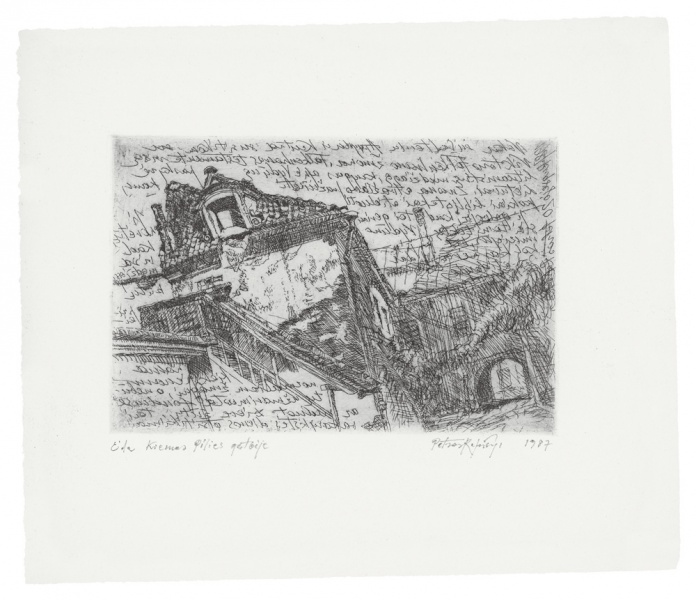Series Vilnius, 1978–1993.
Repšys often uses inscriptions in his graphic art; they can be found in his etchings of Vilnius too. On one hand, these inscriptions perform a visual role: the letters become substitutes for lines, and they form abstract patches in the composition. On the other hand, when engraving a view on a plate, he includes a text, which after printing is reversed and therefore illegible, and its meaning disappears. This is how artists play with meaning, pictures encode texts, make them incomprehensible, and thus intrigue viewers. The most notable examples are the writings of Leonardo da Vinci in his diaries, which have to be read with a mirror. The writings in Repšys’ Vilnius series also contain encrypted diaries: impressions of the day, comments about the subject, confessions about carousing, or the concerns of a politically engaged cultural figure. An engraving of a courtyard on Pilies St has an inscription about the fate of the library of the eminent German Baltic language scholar Viktor Falkenhan: ‘Yesterday, Šaltenis Arvydas, Kentra and I met Viktor Falkenhan’s wife. In his will, Falkenhan bequeathed to Lithuania all his books about Vydūnas and material related to Lithuania. His wife came to see which library and to whom to give the books. She thinks that the Vydūnas museum would be the most suitable, but it has not materialised yet. She would like all the material to be available to every ordinary person, instead of being locked away in archives, or, God forbid, perish; that is what happened yesterday.’
Source: Law firm Valiunas Ellex art album
VILNIUS. TOPOPHILIA II (2015). Compiler and author Laima Laučkaitė
Expositions: “Vilnius. Topophilia. Views of Vilnius from the collection of the law firm Ellex Valiunas”,
5 October –
26 November
2017, National Gallery of Art, Vilnius (curator Laima Laučkaitė)
© VŠĮ „Lietuvos dailės fondas“








